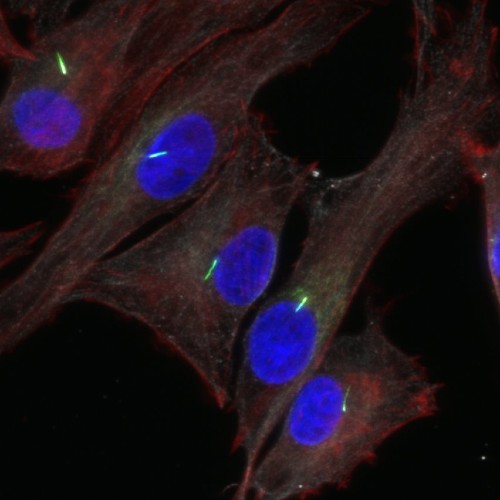Research
Development of high throughput imaging screen of compounds effecting primary cilia expression and resulting consequences for cilia function.
| Principal investigator: | Martin KNIGHT |
| Co-investigator(s): | Chleo Bishop and |
| Funding source(s): | Principal's Scholarship |
| Start: 04-04-2018 / End: 03-04-2021 | |
| Directly incurred staff: | Megan McFie |

The primary cilium is a small singular organelle expressed by almost all mammalian cell types, increasingly reported to be involved in the regulation and transduction of a wide variety of cellular processes and signalling events. Integration of mechanical cues is key to the homeostasis and health of numerous tissue types. However, the regulation and the underlying cellular signalling pathways of mechanotransduction remain poorly understood. Several widespread diseases and conditions such as osteoarthritis and atherosclerosis involve aberrant mechanotransduction.
Here we aim to test the hypothesis that pharmaceutical manipulation of chondrocyte primary cilia expression regulates cartilage mechanosignalling.
The initial study focuses on articular cartilage, where age related degradation of this tissue affects over 8 million people in the UK alone. A high throughput screen of 1721 FDA approved small molecules will be conducted to identify compounds that regulate cilia expression in primary bovine chondrocytes. We have set up an optimised screening protocol using liquid handling robotics, immunofluorescence cilia labelling and confocal InCell 6000 imaging with automated image analysis. The identified candidate molecules will be further investigated as regulators of cilia signalling, which may be repurposed as novel ciliotheraphy. Candidate molecules are likely to have potential widespread applications as regulators of variety of cilia signalling pathways and disease conditions such as inflammation and cancer due to the already established involvement and conserved expression of the primary cilium and its associated ciliome.

